Newthunt
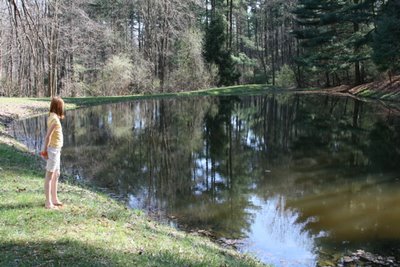
A photograph on Susan Gets Native's wonderful blog stirred me out of my spring stupor and sent me and the kids looking for red-spotted newts this afternoon in our favorite newtpond. The kids, seeing my car pulled over to the side, bounced off the bus in anticipation of a promised newthunt. We weren't disappointed. Red-spotted newts make themselves known with lizardy squiggles in the shallow water of woodland ponds. They wriggle down under the leaf litter on the pond bottom as you approach. If you slow down and look ahead of you, you can see the males floating motionless, doubtless looking for females in the water beneath them.
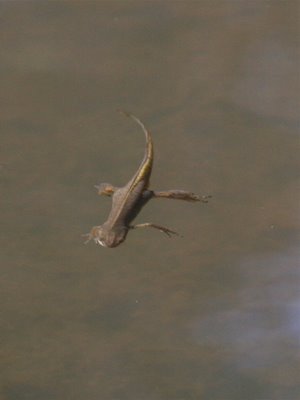
I love the poses they strike, completely relaxed and suspended.
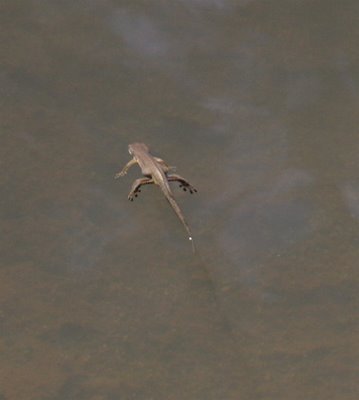 I didn't see any females engaging in this behavior. See the manly bulge at the base of his tail?
I didn't see any females engaging in this behavior. See the manly bulge at the base of his tail?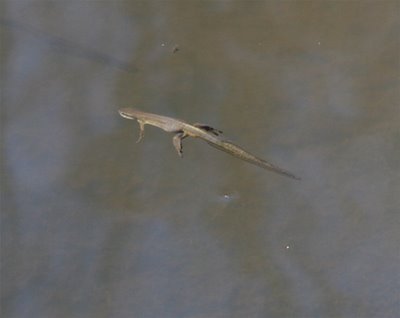
Red-spotted newts (Notopthalmus viridescens) start life as eggs, laid on underwater vegetation in early spring. Half-inch long gilled larvae metamorphose at the end of their first season into a terrestrial form called the red eft, and spend the next four years wandering on land. These flame-orange beauties, protected by poisonous skin secretions, can cover impressive distances. Think of the red eft as a mobile genetic diversity vehicle. This is not my photo. It belongs to Robert Rold.
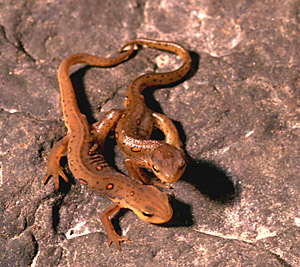
Once they metamorphose into the adult form (which still has lungs, not gills), the newts are able to mate, as the adults in the pond today were doing. Neat to think that it has been at least five years since these animals were born, probably more like six. We don't usually think of amphibians as being particularly long-lived, if we think of it at all. Nor does it occur to us that the nice big lobster we're cracking into may be more than 40 years old. Sustainability. Should we be eating 40-year-old lobsters? Are they able to make more, fast enough? Answer: No.
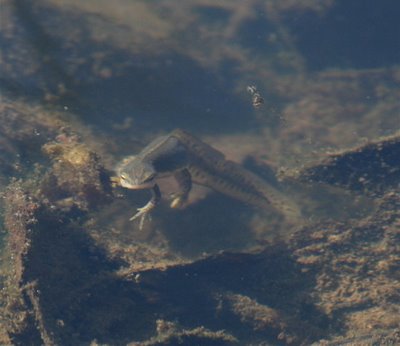 The laterally flattened tail develops after the eft takes back to the water. Lovely thing.
The laterally flattened tail develops after the eft takes back to the water. Lovely thing.And how does one sex a red-spotted newt? By his newtbag, of course.
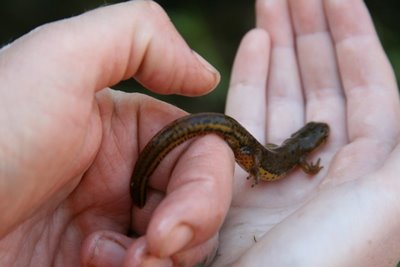
Liam was so thrilled to be able to hold a courting pair of newts. They were distracted enough not to mind being gently scooped up.
The courting pairs we saw were interesting in that the smaller, darker female was lying atop the male's back, kind of sitting on his head and wrapped around him. Dunno what that's about but it's a nice break from the animalian norm.
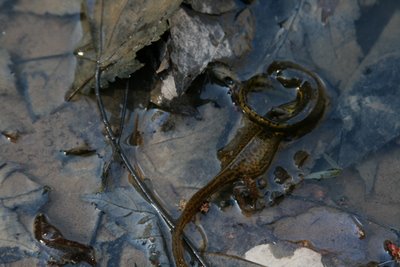
Miss Phoebe was a water naiad, crouching and absorbed.
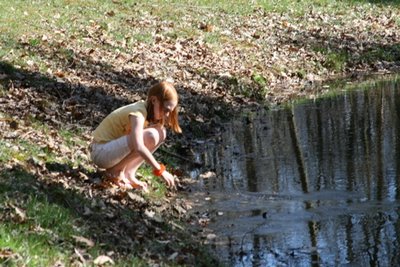
Liam was in constant motion. This is why I get more pictures of Phoebe.
I will quote my little guy here. I wrote this down when he said it. How did it feel to hold newts in your hand, Liam?
"They felt like cream swirling in my hand, only nobody was swirling it.
And with legs, and a nut sack."
This is how the sky looked on our way back up the hill from the pond. Spring skies and observant, eloquent children make my heart swell almost out of my chest.
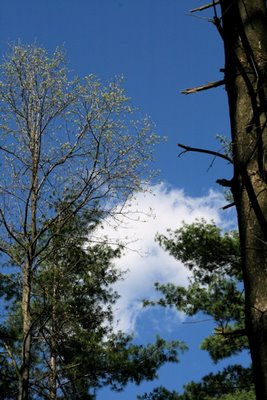 A tiger beetle watches for prey from its perch on a sun-warmed log. Spring fills me up, like a vessel that has been empty all winter.
A tiger beetle watches for prey from its perch on a sun-warmed log. Spring fills me up, like a vessel that has been empty all winter. 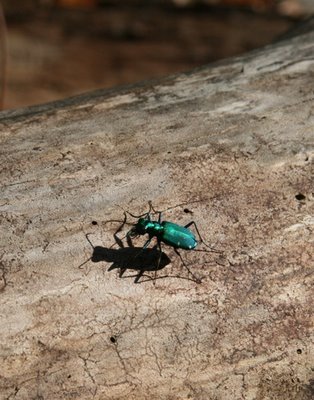
Labels: newt courtship, red-spotted newt






<< Home